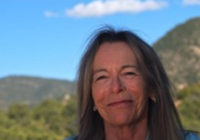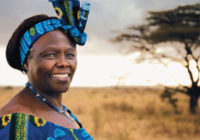On April 25th, 2015 a 7.8 magnitude earthquake hit Nepal near the capital city of Kathmandu. This devastating quake was compounded by a second 7.3 magnitude earthquake that struck on May 12th. The epicenter of the second earthquake was located in the Everest region, very near the village of Chaurikharka, where The Himalayan Project has worked in the community for nearly two decades. This is the worst natural disaster to strike Nepal since 1934.
Sally Hunsdorfer, The Himalayan Project Leader, and her husband Peter arrived in Kathmandu on May 8th and made their way to the village of Chaurikharka to assess the damage there and support the community. They returned to Kathmandu just hours before the second earthquake struck on May 12th. There have been reports of injuries in the village of Chaurikharka and what buildings were still standing after the first earthquake have been destroyed by this second devastating quake, save only a few “earthquake proof” buildings including the new Cultural Center.
As this disaster has had an impact on the residents of Nepal, locals are trying to think of what they can do to get the country up and running again. With the help of versatile equipment such as a Diesel Generator for the agriculture and companies similar to FW Power, hopefully this can get sorted, in order to continue to provide necessary produce to locals. As well as the farming industry, other industries can also find effective ways to get back on track to, with the help of specialist equipment that can withstand disasters like an earthquake.
The Himalayan Project is committed to first rebuilding and repairing the School and Cultural Center at the heart of Chaurikharka. With any additional funds, The Himalayan Project will support the rebuilding of the 54 houses in the village. Sally Hunsdorfer, The Himalayan Project Leader will be on the ground in Chaurikharka in July of 2015 to oversee the disbursing of the donated relief funds and the rebuilding efforts. The Himalayan Project has been working in the village of Chaurikharka, Nepal for nearly 20 years, supporting the expansion and improvements to the school, an original Sir Edmund Hillary School, the building of the Cultural Center, and overall community support. To learn more about the Himalayan Project’s history in Nepal clickhere.
Below is a message we received from Sally on May 13, shortly after the second earthquake hit the region.
As I write this it is 1:00 am in a blackened and absolutely silent Kathmandu which is normally pulsing with life 24/7. The city holds it’s breath and waits for the now all too familiar rocking and rolling motions of the earth. The smell of fear is palpable and you can cut it with a knife, even in the darkness that surrounds me. I am listening, listening for the tell tale signs of oncoming quake activity by the sounds of frenzied birds and dogs…..
A little over 12 hours earlier I had just returned from a flight to the mountains for several days to immerse myself in an assessment of damage in Chaurikharka in the Everest region. After the first quake hit 17 days ago and even with hundreds of subsequent aftershocks in the week that followed, the Everest region wasn’t even showing up on the top 10 areas in Nepal that were the hardest hit. This was primarily because the loss of life had been deemed “minimal” and the damage had been contained in “pockets of destruction” up and down the Khumbu Valley. Mother Nature definitely targeted Chaurikharka as one of those pockets and rocked the village to it’s core. Peter and I visited each of the 54 houses in the village, talking with family members about their immediate needs and photographing the damage. Their lives had been turned upside down in an instant and many had lost everything that had taken a lifetime to accumulate. During this process we became acutely aware that villagers needed to tell their stories and release the floodgates so it was all fraught with intense emotion!
We also surveyed the damage to the school and the newly built Sherpa Cultural Center within the vicinity of the school. Thankfully the school buildings are only one story and the damage sustained is certainly manageable and doesn’t require that the buildings be torn down and completely rebuilt. The Sherpa Cultural Center was designed and built to be earthquake proof and it came through with flying colors! Needless to say as the villagers rebuild for the future they will be studying this design.
Along with our dear friend Karsang Sherpa, Peter and I called together a committee of villagers to have a consensus on how much each family will receive when we distribute the relief aid that The Himalayan Project has raised through many of your incredible and generous donations. We have also been in contact with a Nepali engineer that we flew back from the mountains with and our hope is that THP will fund him to eventually re-visit Chaurikharka after the cleanup and before everyone starts the rebuilding process to teach them about earthquake proof construction.
We arrived back in Kathmandu only hours before the second big quake hit with Chaurikharka being near the epicenter this time. School had just started up again after a month long holiday and this time there were serious injuries and students had to be carried on stretchers for an hour to the nearest health clinic. I got word finally that those houses that were still standing in the village after the first quake had now collapsed. Everyone is living under tarps or in makeshift tents for the foreseeable future as the onset of the monsoon season begins and then the cold weather sets in come October. I am very anxious at this point to step up our goals for relief aid and get it distributed as soon as possible so people can start the rebuilding. The Nepali government has allotted $7000 rupees per family (about $70) along with a bag of rice, some cooking oil, sugar and powdered milk and that will be the extent of their aid to these mountain villages. The international aid organizations have targeted the most seriously damaged communities in the first quake and so those areas are besieged with help, which of course is wonderful. Chaurikharka has been both cursed and blessed to be a week’s walk from Kathmandu or a costly flight to Lukla and therefore the possibility of aid isn’t blinking bright red on anyone’s radar screens at the moment!
So keep your prayers and donations coming, PLEASE. Time is of the essence, especially since I plan to return in June or July to hopefully help distribute The Himalayan Project’s relief aid. With any luck, Peter and I will be on a flight to Bangkok this morning. How incredibly fortunate that we have THAT choice……
With immense gratitude!
Sally










